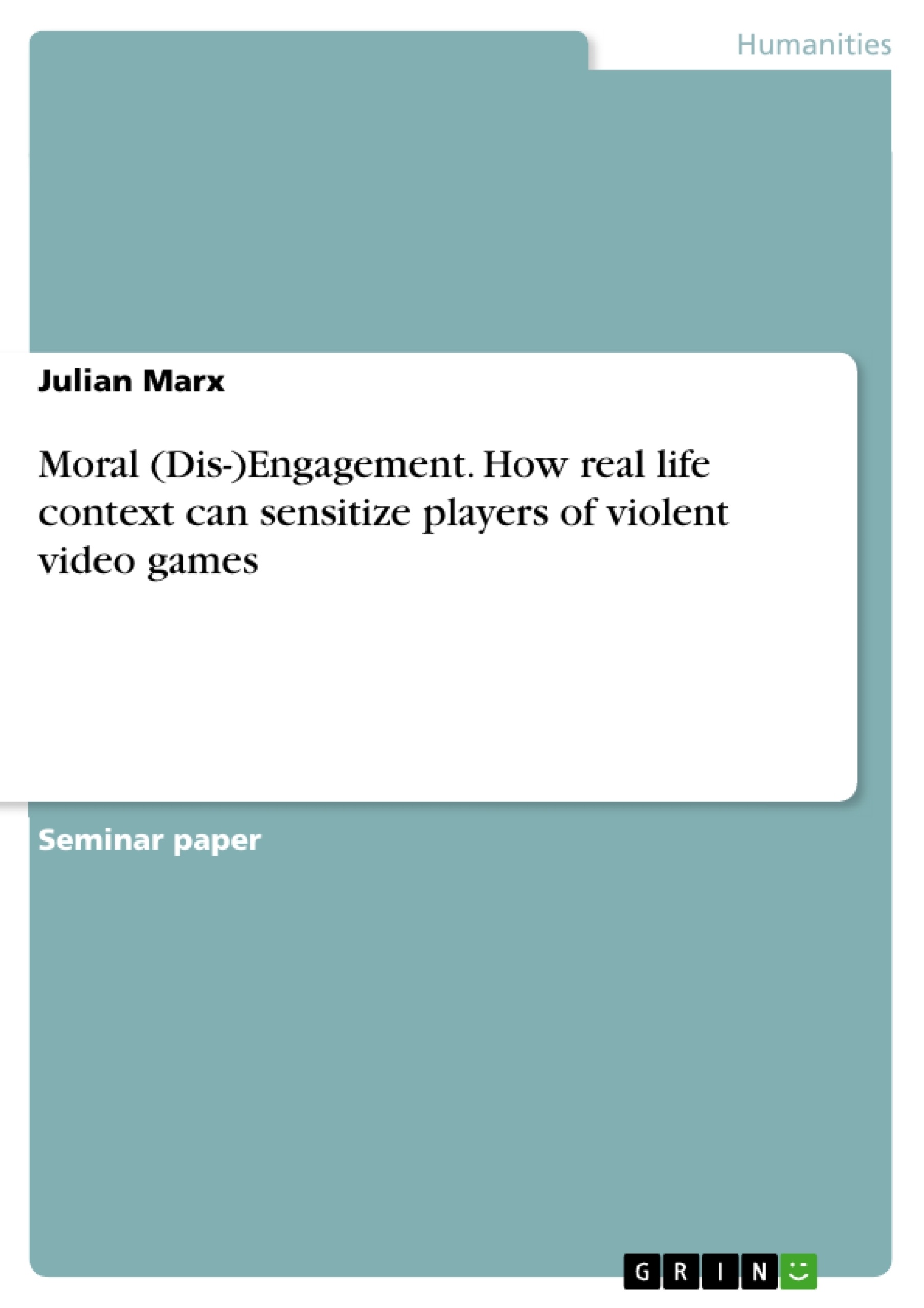Shooting sprees and acts of terrorism shake public opinion and media agendas eminently as the discourse involves strong emotions like anxiety and fear towards violence against humans. Violent video games might arouse similar emotions to individuals, they are often suspected to be the origin of aggression and violent potential of young and male perpetrators with no perspective and a poor social environment.
Research on violent video games is ubiquitous, yet lacks consensus on the effects of these entertainment products and the level of aggression or other emotions aroused by the consumption of violent media. This study outline proposes to invert the leading question - not to depreciate the wonder of how we step into the real world after we have played violent video games - but to find out how we step into violent video games after we have been shattered by reality.
Inhaltsverzeichnis (Table of Contents)
- Introduction
- Literature Review
- Aggression through violent video games and sensitization
- Moral Disengagement
- Interactivity and Realism
- Methods
- Overview
- Participants
- Stimulus material and procedure
- Measures
- Expected Results
- Discussion
- Conclusion
- References
- List of Figures
Zielsetzung und Themenschwerpunkte (Objectives and Key Themes)
This study aims to investigate the potential of violent video games to morally sensitize players through exposure to real-life violence. It challenges the conventional focus on the potential for violent video games to increase aggression by exploring how real-world experiences can influence gaming experiences.
- The effect of violent video games on aggression and moral disengagement.
- The influence of real-life context on gaming experiences and moral sensitivity.
- The role of interactivity and realism in video games and their potential impact on players.
- The potential for violent video games to act as a tool for promoting empathy and moral understanding.
Zusammenfassung der Kapitel (Chapter Summaries)
- Introduction: The introduction establishes the research question and highlights the study's focus on exploring the potential for violent video games to morally sensitize players through exposure to real-life violence.
- Literature Review: This chapter reviews existing research on the effects of violent video games, particularly focusing on the relationship between violent video games and aggression. It also introduces the concept of moral disengagement and its relevance to the study.
- Methods: This chapter details the research design and methodology, including participant recruitment, stimulus materials, procedures, and measurement tools used in the study.
- Expected Results: This section outlines the anticipated findings and potential implications of the study.
Schlüsselwörter (Keywords)
This study focuses on violent video games, aggression, moral disengagement, interactivity, realism, and sensitization. It examines the relationship between real-life context and gaming experiences, exploring how violent video games might impact players' moral understanding and empathy.
- Quote paper
- Julian Marx (Author), 2016, Moral (Dis-)Engagement. How real life context can sensitize players of violent video games, Munich, GRIN Verlag, https://www.grin.com/document/355931



